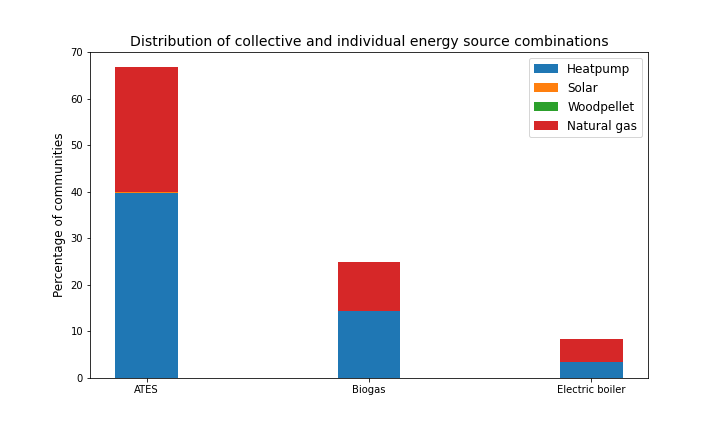An agent-based model of energy security for energy communities
Javanshir Fouladvand

An agent-based model of energy security for energy communities
This project was focused on analysing the energy security of CESs, particularly CESs for thermal applications. It explored the technological and institutional factors that could potentially influence the energy security of such energy initiatives. By focusing on thermal energy communities, we also aimed to shed light on the unique characteristics and processes of these types of communities (e.g. thermal energy implementation and building insulation). An agent-based model (ABM) was built and parameterised using Dutch data. The developed model is the first ABM in the broader energy security literature, introducing the applicability and usefulness of this modelling approach to the field.
The energy security concept presented in this project, which goes beyond the security of supply by considering various dimensions (e.g. environment, governance and energy efficiency), was used to conceptualise energy security in our modelling exercise. The results demonstrated the substantial potential of CESs to reduce CO2 emissions while being affordable in a long-time horizon (i.e. 20 years in this modelling simulation). In detail, among all 48600 CESs in the modelling exercise, members of most CESs (i.e. around 28200, 58% in total) reduced their CO2 emission by 60%, while their monthly payment was less than 80 Euros and only faced discomfort for 4% of their demand on a yearly basis. At the same time, 53% of all CESs were established within three years after the start of the simulation, demonstrating the relatively short duration of establishing such collective entities. With an increasing number of CESs in the future, these results highlight the importance of energy security dimensions other than only security of supply (i.e. availability). More specifically, in addition to availability, environment, governance and energy price dimensions need to be rigorously taken under consideration for a comprehensive energy security assessment with further uptake of these decentralised energy systems.
The results showed the importance of different technological configurations for the energy security of (thermal) energy communities. Although different energy source options were available for individual households in the model (e.g. fully collective renewable energy systems, individual renewable energy systems and fully natural-gas consumption), CESs have always decided to adopt natural gas as part of their energy mix. This highlights the importance of a connection to a natural gas grid (i.e. often a national grid) for maintaining (thermal) energy communities' energy security. However, it is important to note that our research only considered the national gas grid, given its thermal application focus. To study whether the electricity grid plays an equally important role, the model needs to be further extended with other specific configurations (e.g. national electricity grid, microgrid and electric vehicle). The project concluded that the following technical and institutional factors are critical for the energy security of (thermal) energy communities: (i) maintaining a connection to the national grid, (ii) enabling and promoting collective energy generation (e.g. in the form of ATES), (iii) municipality leadership, (iv) subsidy availability for community energy, and (v) more extended vision (e.g. 20 years) on return on investment.
The results of this project are published as follows:
Fouladvand, J., Ghorbani, A., Sarı, Y., Hoppe, T., Kunneke, R., & Herder, P. (2022, September). Energy security in community energy systems: An agent-based modelling approach. Journal of Cleaner Production, 366, 132765. https://doi.org/10.1016/j.jclepro.2022.132765


